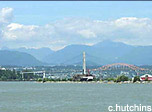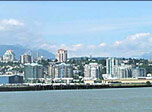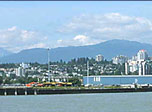Immigration as it was a hundred years ago. These days most immigrants are from Asia and Africa and to address economic problems, Ottawa plans to ramp up arrivals by half a million a year between 2023 and 2025.
With nearly one million job vacancies across the country, Canada is trying the simple solution to solving our complicated labour market issues, internal education and training problems: More immigration.
Immigration Minister Sean Fraser says Canada plans to attract 1.45 million immigrants between 2023 and 2025. Interestingly, Statistics Canada just announced that already, more than one in five Canadians is an immigrant.
This is a divergent viewpoint to that taking hold in Western European countries, that fears being culturally swamped by migrant inflows. Some seek to curtail immigration, blaming immigrants for crime and social disorder. The Russian invasion of Ukraine has not helped economic pressures for general stability. In Canada however, polls seem to indicate an opposite and politically-correct view, that significant immigration is good for Canada as long as it does not displace or upset an individual’s social and work environment.
Canada has historically been pro-immigration, albeit sometimes on a selective basis. (We should never forget the policy of earlier Liberal governments to grant very limited access to Canada for Jews, Chinese and other identifiable groups.) Historically however, Liberal MPs played the immigration game for electoral advantage, signalling to local ethnic groups that if they came to Canada under a Liberal government, they should forever remain loyal voters of the Liberal Party.
Minister Fraser further commented, “Canadians understand the need to continue to grow our population if we’re going to meet the needs of the labor force, if we’re going to rebalance a worrying demographic trend and if we’re going to continue to reunite families.” It’s not clear what these code words and signalling to ethnic and cultural groups fully mean, but vote-getting for the Liberals is surely part of it.
Some of the concerning trends, Fraser continued, include an aging population and a looming wave of retirements. The number of people nearing retirement in Canada is at a record high as baby boomers retire. “It’s going to be about whether we have the economic capacity to continue to fund schools and hospitals and public services that I think we too often take for granted.” Canada has money problems and the minister is blaming citizens.
It sounds suspiciously like a Ponzi scheme. Nevertheless, Canada has long followed policies of trying to recruit immigrants to make up for its low birth rate. Completely separate and unrelated to the refugee problem, Canada has tried to lure “educated economic desirables” from other countries (which also need them.) Canada has also engaged in "foreign temporary workers programs," thereby creating an underclass of lower-paid groups to fill jobs that Canadians don't choose to do, such as agricultural labour.
Quebec is quite vocal about its ability to
assimilate foreigners into the Quebecois language and culture, as it is
strongly objecting to Ottawa's latest announcement. The racist notion is always
raised to squelch opinions about national values and the cultural assimilation
of immigrants.
The majority of new immigrants to Canada arrive from countries in Asia and Africa, with projections that by 2041, one in four Canadians will be born on those continents. The minister claims Canada is aiming to attract 465,000 permanent residents in 2023, 485,000 in 2024, and 500,000 in 2025. However, Canada will likely never achieve those benchmarks. The immigration minister forgets that “Liberals can’t manage.” The current processing backlogs of files reflect administrative chaos. Local MP's offices have become extensions of the department, as the system does not talk or explain to applicants what is happening with their long-delayed files.
Canada continues to be the fastest-growing country in the G7. Consequently, there is a housing problem. Presently, 23% of Canada’s population are immigrants, the highest mix since 1867. Since the early 1990s, Canada has maintained high immigration, accepting an average of 235,000 per year. Anyone who questions the wisdom of these rates will likely be censured and socially "canceled" and labeled “nativist” for being one who objects to changes to the historical cultural and racial composition of Canada.
Economists are wary of the government's claims of addressing economic problems mostly through immigration. Besides the issue of the demand for low-cost housing, efforts of social engineering have not changed the shape of the population diagram age pyramid. However, we are perhaps developing an identifiable low-earner class of newer arrivals.
Canada's points-merit-application system is honourable in intent. Nevertheless, within that system, arrivals claim to have credentials and skills, (sometimes fake) but too often do not meet high Canadian standards.
Canadian middle-class wages and general productivity have been stagnant and may be partly caused by high immigration levels discouraging capital investment and automation, in favour of cheaper immigrant labour. Sadly, most of the 400,000 new arrivals from the last couple of years will find themselves competing for low-skill jobs and housing, with another big wave of arrivals next year.
It’s claimed that Ottawa's “new selection tools” will better target sectors that have the highest need for labour. Didn't the Jean Chretien, Paul Martin, and Stephen Harper administrations all promote similar things? The Liberals say that Canada is going to introduce new “selection tools” that will help its immigration system better target sectors such as healthcare and construction that have the highest need for labour. So, we are going to get more episodic interventions, situational fixes, and special deals. Count on it, these “new tools” will put special powers into the hands of the Prime Minister's Office and the Minister of Immigration. It sounds more like an election preparation scheme.
If politicians are wondering why not enough Canadians are bearing offspring, just look at the high cost of living. “Justinflation” is real. Immigration also has been throwing gasoline on the fire of the rental market. Yet the minister signals an ambitious plan for more immigration to solve these problems. The best predictor of future success is past performance, and the performance of the Liberals has been dreadful. Some estimates put the application backlog at about 2.6 million, and with excruciating processing times. A skilled tradesperson applying to come to Canada would have their application processed within four years. The express program for provincial nominees stands at 15 months. How can Canada attract the best and brightest with processing times like this? Where are they going to come from? Canada admits that it is in an internationally competitive market for skilled tradespeople. Western developed nations are all competing for the same people, so Canada must improve to compete.
First, we must end the administrative chaos. There are no easy fixes. Grandiose targets for political posturing without the actual means are irresponsible. 2.2 million people are waiting for approval for temporary residence, permanent residence and Canadian citizenship applications. 1.2 million have waited beyond the standard time expected for their application. In permanent residency category, there are 603,700 applicants. Only 279,700 of these are being processed within standard times; 54 per cent or 324,000 applications, are not being processed within the advertised times, and some files get lost and are never processed.
Some technical internal fixes could include: Get serious with national and provincial negotiations on the singular topic of recognition of international credentials. A major effort must be made with professional and trade associations to evaluate standards in countries of origin to establish a workable system for assessing and recognizing credentials and experience. We need to ensure that equivalency exams are fair and that they accurately reflect the level of understanding expected of individuals educated in Canada. A national effort must be made, in consultation with Canadian professional and trade associations, to develop criteria for obtaining equivalent Canadian professional status, transition, and bridging programs for the integration of foreign-qualified individuals into the Canadian workplace. Prequalify internationally trained individuals for certain occupations as part of the immigration process. We must require the credentials process to be fully disclosed to applicants by immigration staff overseas, and on the Citizenship and Immigration Working in Canada website.
Second, Canada can better encourage international students graduating from accredited Canadian colleges and universities to remain and work in Canada. We must develop a better system to identify Canada’s occupations facing current labour market shortages and make the system responsive to needs.
Canadians rightly expect the entirety of our immigration system to reflect our values. That means the system should be open, fair, compassionate, and respectful of everyone who interacts with it.
Creating a more robust and better-functioning immigration system is good for Canada's economy, and is the right thing to do. The international talent competition is the reality, with or without us. A better Canada is possible. Stop politicking with the system for possible voter favour, and work to enhance society as a whole, rather than seeking political party advantage.









No comments:
Post a Comment